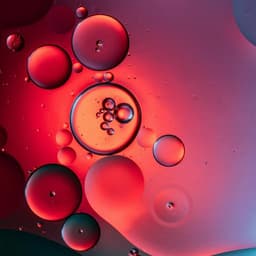Introduction
Aquaculture is a rapidly growing food sector facing challenges in feed sustainability. Fishmeal (FM) and fish oil (FO), crucial components of aquafeed, raise environmental and ethical concerns due to overfishing of forage fish, impacting both marine ecosystems and human food security. While the aquafeed industry is reducing FM and FO usage with terrestrial plant ingredients, these alternatives often lack essential amino acids, digestibility, and long-chain omega-3 fatty acids (n-3s) like eicosapentaenoic acid (EPA) and docosahexaenoic acid (DHA). These deficiencies lead to lower-quality tilapia fillets, impacting human health due to altered n-3/n-6 fatty acid ratios and increased pro-inflammatory eicosanoids. Marine microalgae present a promising sustainable alternative, offering balanced amino acids, minerals, vitamins, and long-chain n-3s. However, research on the impact of microalgae-based fish-free diets on tilapia growth, feed conversion, and fillet quality remains limited. This study aimed to develop and evaluate a cost-competitive fish-free tilapia feed using a combination of commercially available microalgae, addressing the sustainability and nutritional quality issues of conventional tilapia feed.
Literature Review
Existing literature highlights the urgent need for sustainable alternatives to fishmeal and fish oil in aquaculture feeds. The overreliance on these ocean-derived ingredients poses threats to marine ecosystems and human food security. While terrestrial plant-based alternatives have been explored, their limitations in terms of digestibility, amino acid profiles, and omega-3 fatty acid content have been widely documented. Several studies have investigated the potential of marine microalgae as replacements for fishmeal and fish oil, citing their balanced nutritional profiles and high content of long-chain omega-3 fatty acids. However, comprehensive research on the use of microalgae in fully replacing fishmeal and fish oil in tilapia feeds, and assessing their impact on growth performance and fillet quality, has been lacking. This study builds upon previous research demonstrating the partial replacement of fishmeal with *N. oculata* and fish oil with *Schizochytrium* sp. in tilapia diets.
Methodology
This study employed a completely randomized design to evaluate four diets: a reference diet (containing FM and FO at levels found in commercial tilapia feed), and three experimental diets (33NS, 66NS, 100NS) with varying levels of fishmeal replacement by *N. oculata* defatted biomass (33%, 66%, and 100%) and complete fish oil replacement by *Schizochytrium* sp. All diets were isonitrogenous (37% crude protein) and iso-energetic (12 kJ/g). Four hundred eighty Nile tilapia (mean initial weight 34.5 ± 2.06 g) were randomly distributed into 12 tanks (four diets × three replicates). Fish were fed at rates of 8%, 6%, and 4% of body weight at different stages of the 184-day experiment. Monthly biomass measurements were conducted. At day 121 and 185, fish were euthanized, and fillet and whole-body samples were collected for proximate analysis, amino acid profiles, fatty acid profiles, and mineral analysis. In-vitro protein digestibility was assessed using a pH-stat method with tilapia stomach and intestine crude enzyme extracts. Hedonic analysis was used to estimate market prices for defatted *N. oculata* meal and whole-cell *Schizochytrium* sp. Economic conversion ratios (ECR) were calculated to compare the cost-effectiveness of the diets. Statistical analysis (ANOVA and Tukey's HSD test) was used to compare the results across treatments.
Key Findings
Tilapia fed the fish-free diet (100NS) exhibited significantly better final weight (p<0.05), weight gain (p<0.05), percent weight gain (p<0.05), and specific growth rate (p<0.05) compared to the reference diet. The feed conversion ratio (FCR) was improved in the fish-free diet although not significantly. The fish-free feed resulted in significantly higher fillet lipid content (p<0.05), with no significant differences in protein and ash content observed across diets. Tilapia fed the fish-free diet also showed a significantly higher DHA content in their fillets (p<0.05), almost twice that of fish fed the reference diet. The in-vitro protein digestibility was highest in the fish-free feed although this difference was not statistically significant (p > 0.05) from the reference diet. The hedonic analysis estimated median prices for defatted *N. oculata* and whole-cell *Schizochytrium* sp. Despite the slightly higher feed cost of the fish-free diet, the economic conversion ratio (ECR) was lower ($0.95/kg tilapia) than the reference diet ($1.03/kg tilapia), demonstrating cost competitiveness. No significant differences were found in the macro-mineral composition of fillets across diets, with the exception of selenium. Arsenic levels were significantly lower in the fish-free diet fillets than in the reference diet fillets.
Discussion
The study's findings demonstrate that a combination of commercially available microalgae can successfully replace fishmeal and fish oil in tilapia feed, leading to improved growth performance and fillet quality. The superior growth of tilapia fed the fish-free diet suggests that the microalgae blend provides a more digestible and nutritionally complete source of protein and essential fatty acids, including DHA, compared to the reference diet. The higher DHA content in fillets from the fish-free diet is significant for improving the nutritional value of tilapia for human consumption and for market appeal. The cost-competitiveness of the fish-free feed, despite a slightly higher feed cost, highlights the potential for microalgae to become a sustainable and economically viable alternative to conventional ingredients. The observed differences in selenium and arsenic levels suggest potential differences in the bioavailability and uptake of these elements between microalgae-based and conventional feeds.
Conclusion
This study provides strong evidence supporting the development and implementation of fish-free tilapia feeds using a blend of *Nannochloropsis oculata* and *Schizochytrium* sp. The improved growth performance, enhanced fillet quality (especially DHA content), and cost-competitiveness of this microalgae-based feed demonstrate its potential to revolutionize tilapia aquaculture, promoting sustainability and improving human nutrition. Further research should focus on optimizing microalgae blend ratios, exploring different microalgal species combinations, and investigating the long-term effects of these feeds on tilapia health and reproduction.
Limitations
While the study demonstrates the efficacy of the microalgae blend in replacing fishmeal and fish oil, several limitations should be considered. The study was conducted under controlled laboratory conditions, and the results might not fully reflect the performance of this feed under diverse farming conditions. The hedonic price estimation relies on market data and may not perfectly predict future pricing dynamics. The short-term nature of the study may not fully capture the long-term effects of the fish-free diet on tilapia health and reproduction. Furthermore, a more detailed analysis of digestive enzyme activity would strengthen the conclusions about enhanced protein digestibility.
Related Publications
Explore these studies to deepen your understanding of the subject.






